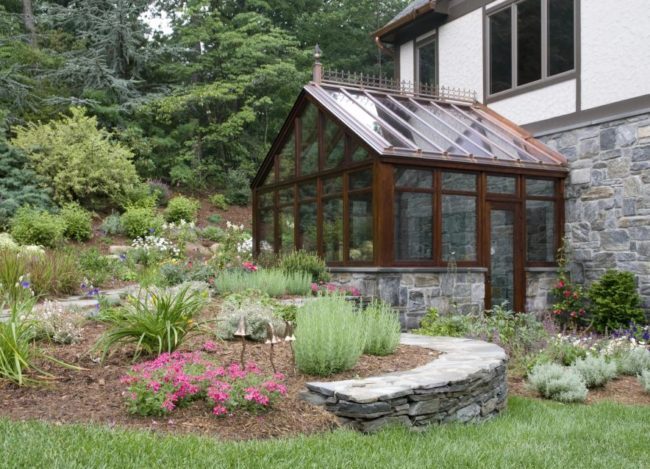Each landscape is dynamic. Nothing stands still. Without proper and constant care, all landscape designs will slowly and steadily degrade over time until complete reconstruction becomes the only means of their improvement.
In order to avoid large-scale landscape reconstruction, it is necessary to periodically conduct a year-round assessment that allows you to see and evaluate the effectiveness of your landscape, as well as determine what needs to be focused on, pay more attention to, and what can be oriented at minimal costs. Take notes and photos for more thorough analysis. Use them to review progress at each new stage and throughout the season and as a basis for changes. If you see a problem, solve it as soon as possible. An early-season assessment allows you to see where plants can be transplanted to fill empty spots.
During the year, we recommend conducting 3 seasonal studies that can help you understand what happens when your landscape comes to life in the spring, actively grows and matures in the summer, and prepares to go dormant in late fall and winter:
Early spring — March / April.
This is the first critical assessment of the new season, before the plants will actively grow. Early spring is ideal for assessing landscape features such as flower beds and lawn lines, as the absence of foliage allows you to clearly see the zonation of the landscape. Use this time for structural work that can be done later in the spring and summer. Don’t forget to make notes that you can refer back to during mid-season and end-of-season evaluations.
Midsummer — July / August.
By this time, your lawn and garden are in full bloom. The plants are at the peak of their growth, and everything is already filled, so you can clearly see any areas that have become crowded and experience significant gaps that need to be eliminated. The sooner this assessment is done, the more opportunities you will have to plan for both summer and fall work, such as pruning, transplanting, and planting.
Mid-autumn – October / November.
The season is ending, and the plants are preparing for a long winter period of rest. During this period, you can analyze the results of the entire year in order to plan corrections for the new season. Now is the best time to start planning early spring work that will allow you to start the new season.
When you carefully evaluate your landscape throughout the year, you can ensure thoughtful, ongoing management that takes into account your original design intentions while allowing you to take advantage of opportunities to make progressive improvements and adjustments. You’ll be able to steer your landscape more effectively in a direction that reflects your vision, rather than forcing yourself to react on a larger scale because you’ve allowed small glitches to accumulate over time, eventually requiring major repairs.
The key point here is that landscapes require more than just maintenance. Even with good service and growth rates, it will be necessary to change the landscape. Be prepared to invest in changes that will affect environmental changes, as well as maturation and aging processes. This will ensure the longevity of your landscape.
Developing landscape.
Avoid major renovations by periodically evaluating the landscape during the growing season to identify opportunities for small changes that will extend the life of your landscape.
Someone – the owner or service provider – must conduct functional assessments of the landscape no more than once an hour and give recommendations on actions other than mulching and mowing, pruning and weeding. Regular periodic changes will keep the landscape in optimal condition and functionally balanced. Nature is constantly evolving, as is your landscape.
You can contact us about landscape design and care, as well as visit our garden center store Mon-Fri from 8:30 a.m. to 6:00 p.m.

